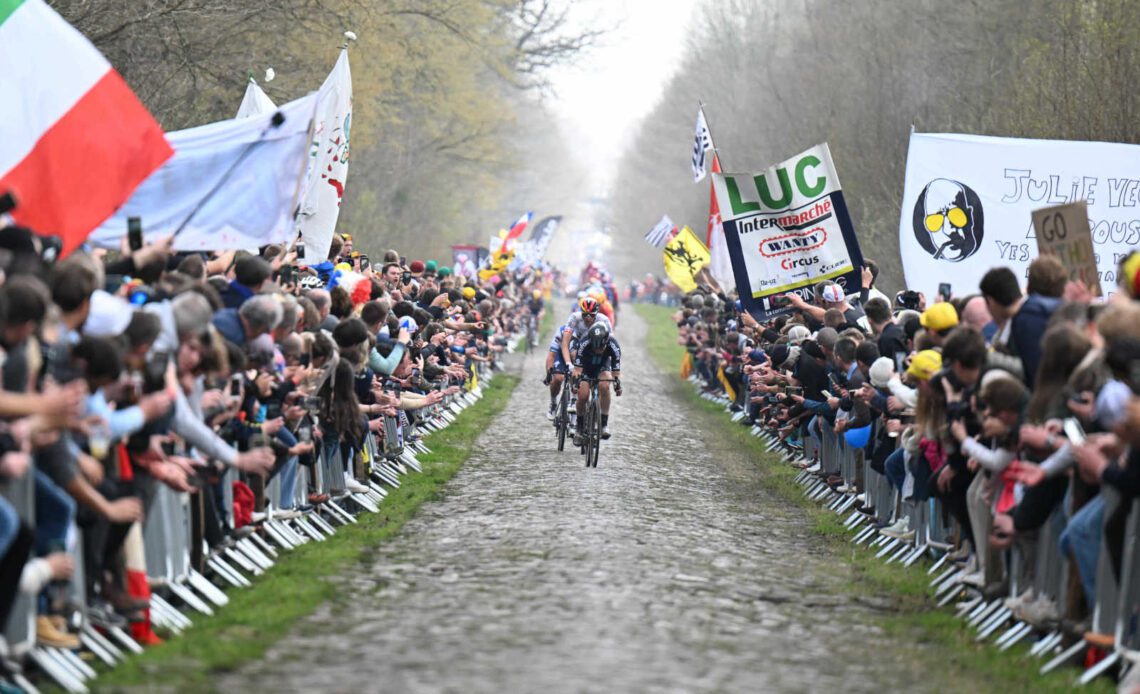On Wednesday, Amaury Sports Organization (ASO) confirmed there will be chicanes placed before the Arenberg forest section. It’s a relentless 2.3-km stretch of unforgiving cobblestone, notorious for its ferocity and hazards. As they approach, riders can reach speeds of up to 60 km/h, with teams organizing leadout trains to propel their leaders to the forefront. It’s a high-stakes battle and can result in many crashes.
On Tuesday, ASO’s Thierry Gouvenou spoke about it. “I’ve ridden here twelve times, and 12 times I’ve arrived at the start of the Arenberg forest wondering how I’m going to get to the front.”
11th hour solution
He stated that, in response to a request from the riders’ union, the C.P.A. (Cyclistes Professionnels Associés), the director of Paris-Roubaix is endeavoring to devise a last-minute solution to ensure the safety of riders.
Is this a joke? 🤔 https://t.co/WkkUe2YC5U
— Mathieu Van der Poel (@mathieuvdpoel) April 3, 2024
“The principle is to find corners to slow down the field and make it longer, a bit like the chicanes system on motor racing circuits,” Gouvenou said. “Currently, they are coming at about 60 km/h in the Arenberg section, if they could slow down to 30-35 km/h, it would be less risky. And it would highlight the difficulty of the gap because the runners would arrive without momentum.”
Slower = better?
Gouvenou mentioned that he wrote to the riders, cautioning them about increased braking before reaching the pavé. He noted that they expressed a preference for braking heavily, even at the risk of falling on the tarmac, rather than entering the cobbles at 60 km/h.
George Hincapie: ‘To win Paris-Roubaix, you can’t have friends’
“For safety reasons and following a request from the CPA, The Paris-Roubaix organization is modifying the approach to the Trouée d’Arenberg,” a post on X read on Wednesday. “The route will take a chicane just before the entrance to the sector in order to slow the speed at which the riders enter the sector and limit the risk of crashes on the cobbles.”
Logistics still unclear
It’s unclear how the chicanes will look–or what they will be made of. The question is, will it help? Instead of riders going full gas before the cobbles on a flat road, they will be zigzagging their way in leadout trains, elbow-to-elbow. Granted, they will be going slower, so if they do fall it might (?) be less painful? Then again, it could make the lead-up even harrier….
Click Here to Read the Full Original Article at Canadian Cycling Magazine…

